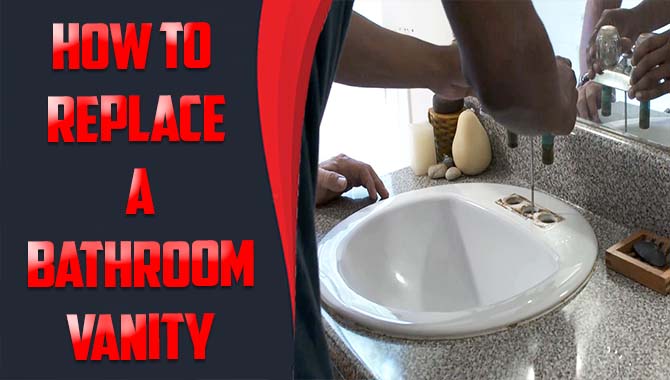Have you ever faced the dreaded moment when your toilet won’t flush? It can feel like a small disaster. You may wonder, “How do I unclog a toilet without making a bigger mess?” Fortunately, you’re not alone in this struggle.
Imagine it’s late at night, and suddenly the toilet acts up. Panic sets in, right? But here’s a fun fact: most toilet clogs aren’t as scary as they seem. With the right steps, you can solve the problem quickly and easily.
In this article, we’ll explore practical tips on how to unclog a toilet. Whether you’re facing a stubborn blockage or just want to be prepared, these tricks will help. Let’s turn that toilet trouble into a quick fix!
How To Unclog A Toilet: Effective Steps And Tips
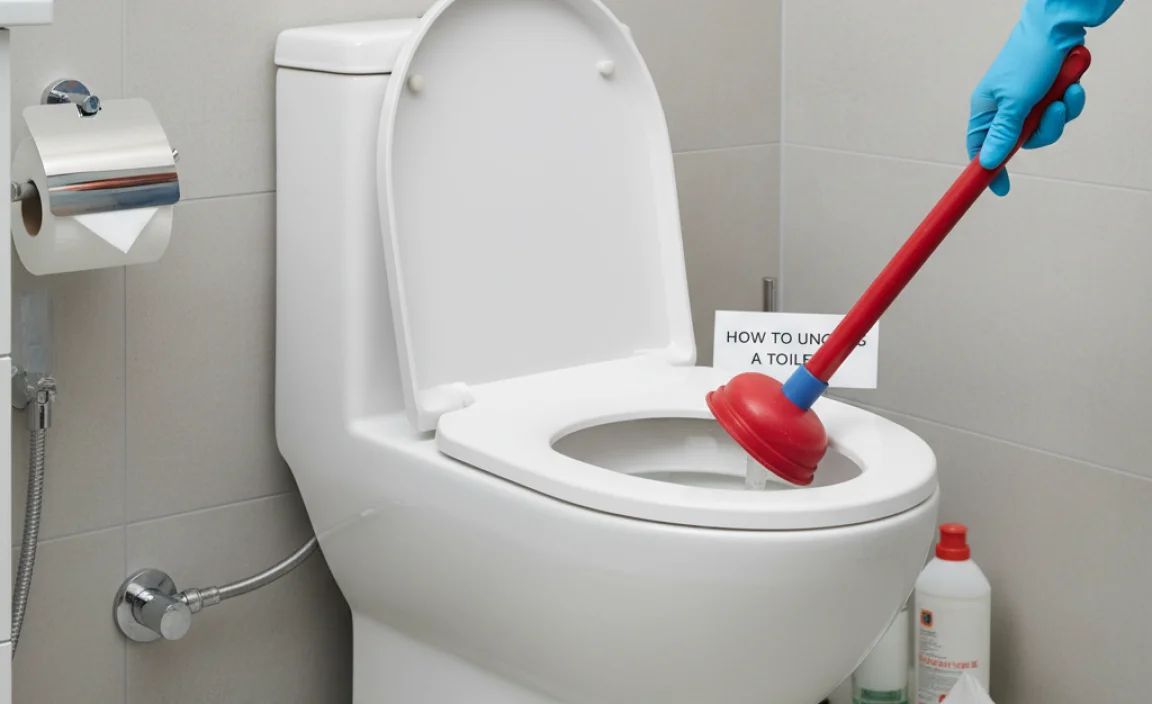
How to Unclog a Toilet
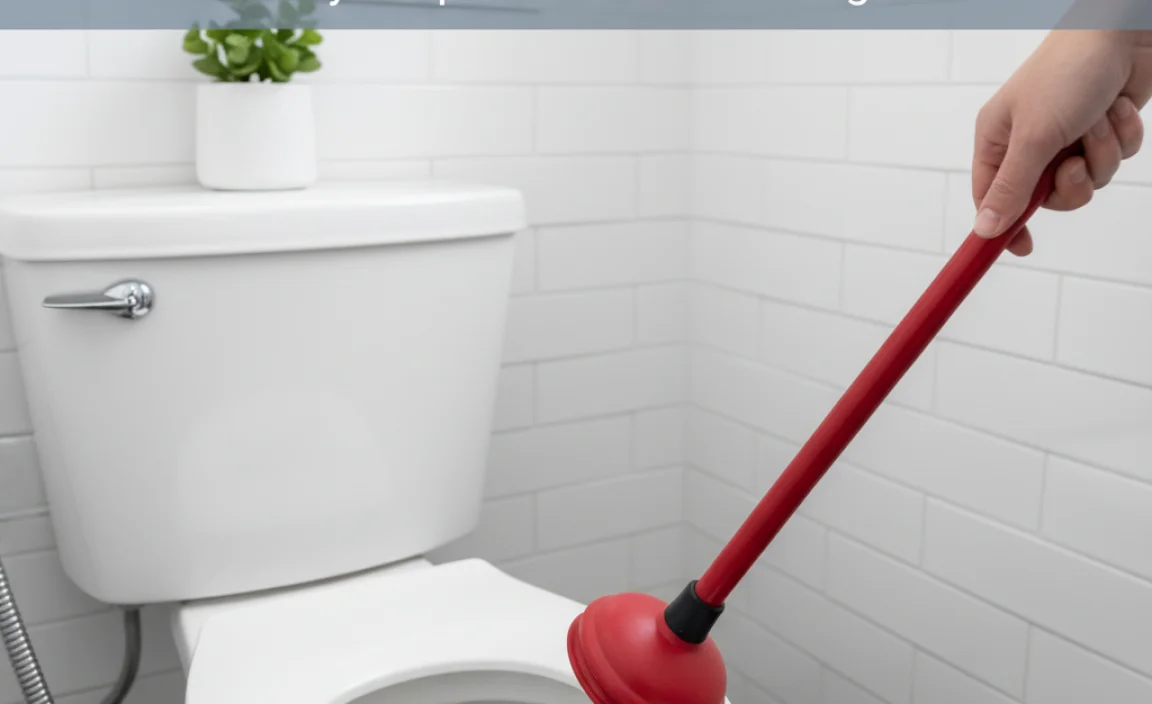
Clogged toilets can be a real headache, right? No one wants to deal with that mess. You can try natural methods first! Baking soda and vinegar can work wonders. Try pouring a cup of baking soda into the bowl, followed by vinegar. Let it fizz and sit for a bit. Another option is hot water; pour it slowly to avoid cracks. These simple tips can save you time and effort for a cleaner bathroom.
Common Causes of Toilet Clogs
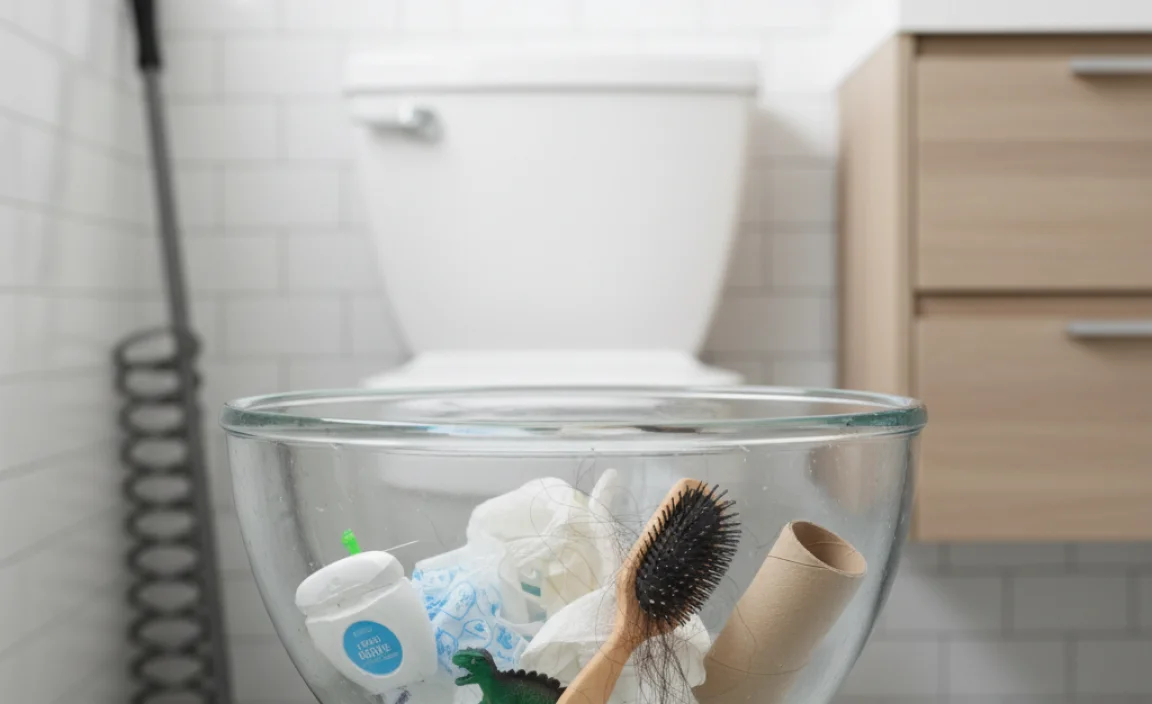
Identifying frequent culprits: toilet paper, foreign objects, etc.. Understanding the impact of plumbing issues on clogs.
Clogs often happen from common items. Toilet paper is a big reason why toilets get stuck. If you use too much, it can block the pipes. Other things like toys or sanitary products can also cause problems. Plumbing issues can make clogs worse. Old pipes may not work well. This can lead to messy backups. Staying aware of these causes can help keep your toilet clear.
What items can cause toilet clogs?
- Excess toilet paper
- Foreign objects like toys
- Sanitary products
- Grease or food waste
Did you know that a clogged toilet is one of the most common household issues? Being careful with what goes down can save you time and stress!
Tools You’ll Need
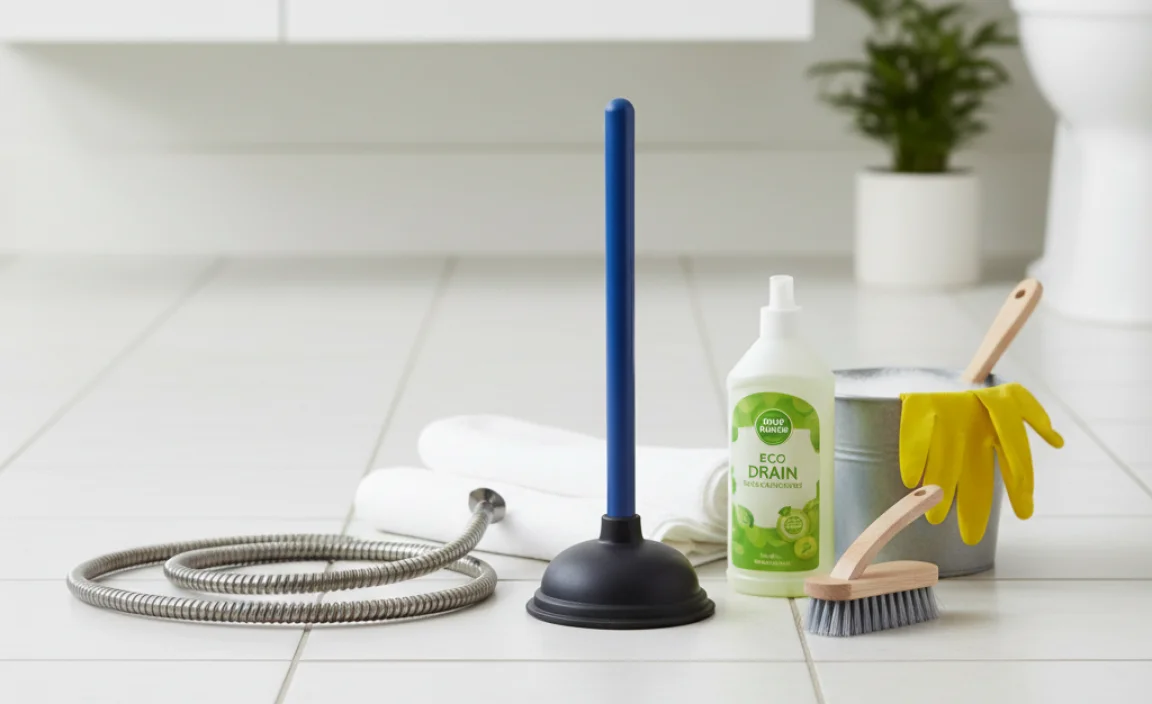
Essential tools for unclogging: plunger, auger, and more. Optional tools for tougher clogs: wet/dry vacuum, baking soda.
To clear a clogged toilet, you’ll need a few essential tools. These will help you fix the problem quickly. Here’s what you need:
- Plunger: This is the first tool to try. It creates pressure to push the clog away.
- Auger: This tool is great for tougher clogs. It digs deeper into the pipes.
For tougher clogs, consider these optional tools:
- Wet/dry vacuum: This can suck out stubborn clogs.
- Baking soda: Mix it with vinegar for a chemical reaction that can help!
Having the right tools makes unclogging toilets easier and faster!
What is the best tool to unclog a toilet?
The best tool to unclog a toilet is a plunger. It’s easy to use and effective for most clogs!
Step-by-Step Guide to Unclogging a Toilet
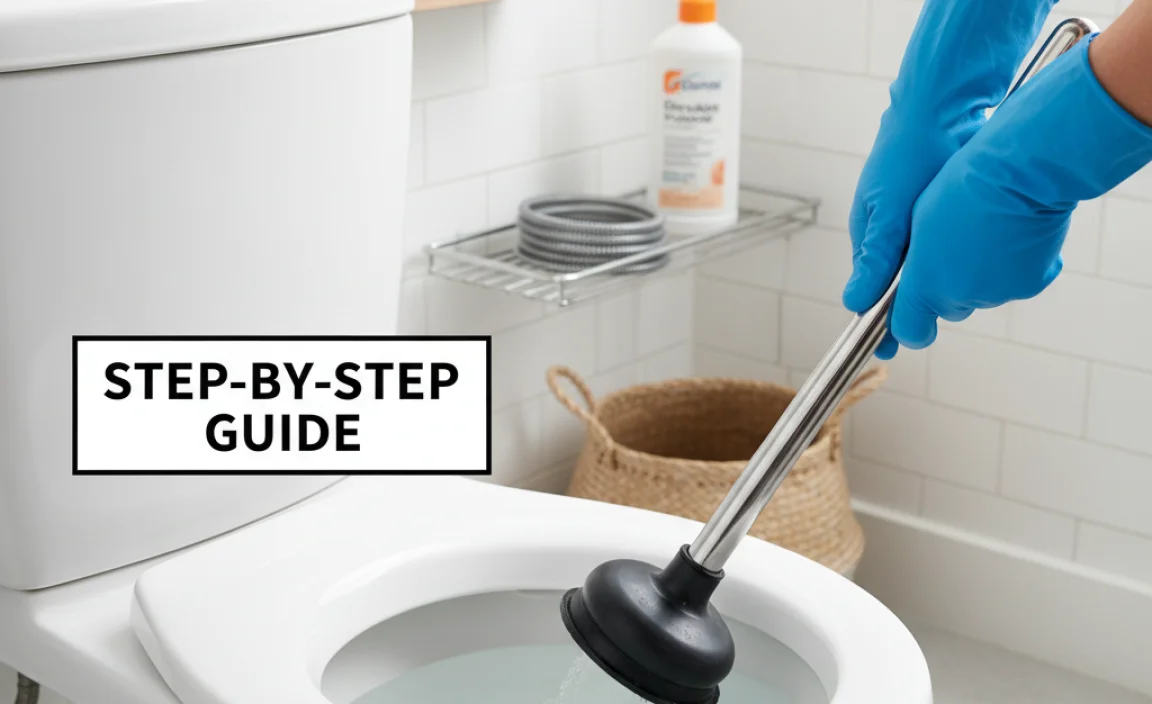
Using a plunger effectively: techniques to maximize success. When to use a toilet auger and how to operate it properly.
Ready to tackle a toilet clog? Grab your plunger! Start by placing the bowl of the plunger over the hole. Give it a firm push and pull—it’s like a dance, really! Keep the seal tight for best results. If the plunger doesn’t do the trick, it’s time to call in a toilet auger. This tool can reach deeper clogs. Just feed it into the drain and twist. Voilà! Your toilet is back in action and you can flush away your worries.
| Tool | Best Use |
|---|---|
| Plunger | Simple clogs |
| Toilet Auger | Deep or stubborn clogs |
Alternative Methods for Stubborn Clogs
Chemical unclogging solutions: pros and cons. Natural remedies: baking soda and vinegar method explained.
Sometimes, drains can be tougher than a superhero movie plot. While chemical solutions work fast, they can be a bit harsh. They might clear clogs quickly, but they can also damage pipes over time. It’s like taking a shortcut through a crowded park: it’s quick, but you might trip over your shoes!
On the other hand, natural remedies like baking soda and vinegar are gentle on pipes. Just mix them and pour into the toilet. After waiting for about 30 minutes, flush with hot water. It’s fun to watch them bubble away! Here’s a quick comparison:
| Method | Pros | Cons |
|---|---|---|
| Chemical Solutions | Fast-acting | Can harm pipes |
| Baking Soda & Vinegar | Eco-friendly, safe | May take longer |
Your toilet troubles can be solved with some creativity and a dash of humor!
Preventative Measures to Avoid Clogs
Best practices for toilet use: what to flush and what not to. Regular maintenance tips to keep plumbing in good condition.
To avoid clogs, smart toilet use is key. Flush only toilet paper and human waste. Never flush items like wipes, cotton balls, or food. They can cause big problems!
Regular plumbing care keeps everything flowing smoothly. Here are some simple tips:
- Check for leaks around the base.
- Use a toilet cleaner monthly.
- Avoid flushing too much at once.
- Inspect pipes for any blockages regularly.
Staying mindful helps prevent messy surprises!
What should I never flush down the toilet?
Do not flush wipes, feminine products, or food. These items can block pipes, leading to clogs.
When to Call a Professional
Signs that indicate you need plumbing assistance. Cost considerations and what to expect from a plumber.
Have you tried everything to fix that pesky toilet, but it’s still staring at you like a stubborn mule? It might be time to call in a professional. Signs you need help include water pooling around the base or gurgling noises that resemble a hungry monster. Ignoring these signs could lead to bigger problems!
Now, let’s talk coin; plumbing help doesn’t always come cheap. Expect to spend around $100 to $300, depending on the issue. Dear wallet, let’s hope you’re in good shape! A plumber will assess the problem, provide advice, and make sure that toilet is back to its flushing glory.
| Signs You Need Help | Estimated Costs |
|---|---|
| Gurgling sounds | $100 – $300 |
| Water leaks | $150 – $400 |
| Frequent clogs | $75 – $250 |
Special Considerations for Different Toilet Types
Differences in unclogging standard vs. lowflow toilets. Addressing clogs in antique or specialized toilet models.
Unclogging a toilet isn’t a one-size-fits-all job. Standard toilets work one way, while low-flow models need extra care. Low-flow toilets use less water, which means they may clog more often. Antique or special toilets? They come with their own quirks. Always check the flushing mechanism, as some may be as tricky as a cat on a hot tin roof!
| Toilet Type | Unclogging Tips |
|---|---|
| Standard | Use a plunger; a classic move! |
| Low-Flow | Try a gentle approach; less water, less pressure. |
| Antique | Check for hidden buttons or a chain issue. |
Remember, every toilet has its own personality. Treat it with respect, and it will repay you by working well!
Conclusion
In conclusion, unclogging a toilet is simple. You can use a plunger or a toilet auger. Always check for blockages first. If it’s too tough, ask for help. Clean your tools after use. Practicing these steps can save you time and stress. For more tips, keep reading or ask an adult to assist you!
FAQs
What Are The Best Tools To Use For Unclogging A Toilet?
The best tools to unclog a toilet are a plunger and a toilet auger. A plunger has a rubber cup that helps push the blockage out. You can use it by pushing and pulling it up and down in the toilet bowl. If the plunger doesn’t work, a toilet auger can help reach deeper clogs. It’s a long, flexible tool that can clear tough blockages.
Are There Any Natural Methods To Unclog A Toilet Without Chemicals?
Yes, there are natural ways to unclog a toilet. You can try using hot water. Just boil some water and carefully pour it into the toilet. Another method is to mix baking soda and vinegar. Pour a cup of baking soda followed by a cup of vinegar into the bowl. Wait for a while, then flush. These methods can help clear the clog!
How Can I Prevent My Toilet From Clogging In The Future?
To prevent your toilet from clogging, only flush toilet paper and waste. Don’t flush items like toys or wipes. You should also check if your toilet has a good flow. If it doesn’t, ask an adult to help fix it. Regularly clean the toilet can help too!
What Steps Should I Follow To Safely Unclog A Toilet?
To unclog a toilet safely, start by putting on rubber gloves. If you have a plunger, place it in the bowl. Push down firmly and pull up quickly to create suction. Do this a few times until the water goes down. If that doesn’t work, you can try a toilet snake, which helps remove things stuck deeper down. Always wash your hands after!
When Should I Call A Plumber Instead Of Trying To Unclog The Toilet Myself?
You should call a plumber if the toilet is still clogged after you tried to fix it. If water is leaking or overflowing, it’s also time to get help. When you’re not sure what to do next, a plumber can help. They have special tools and know-how to fix tricky problems. It’s always better to be safe!






